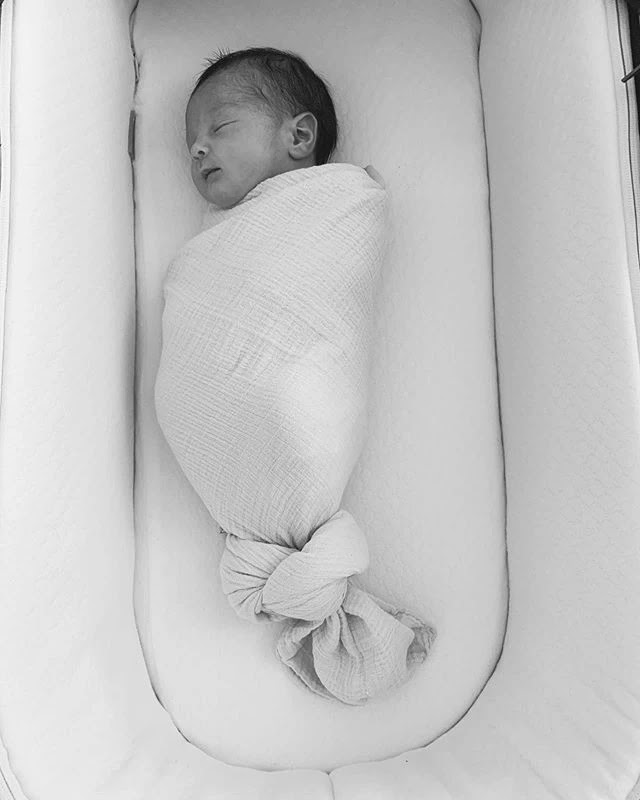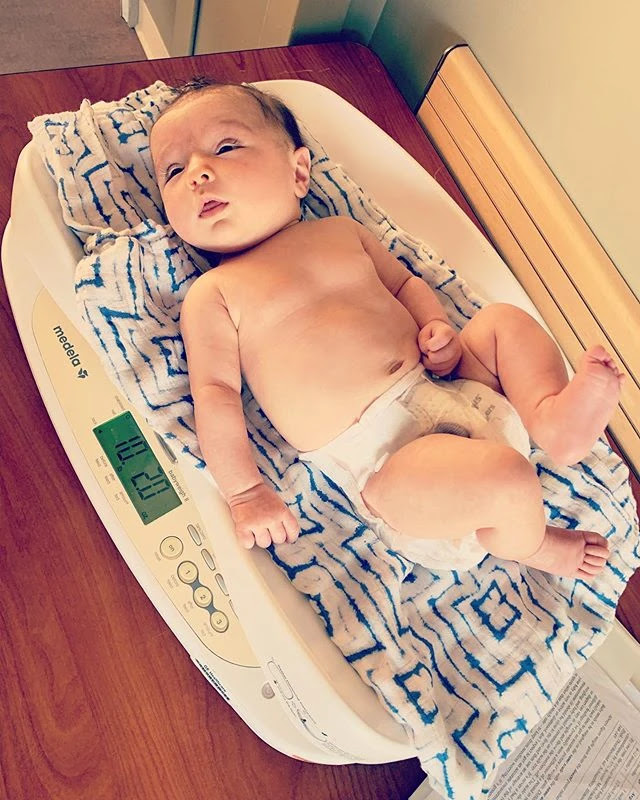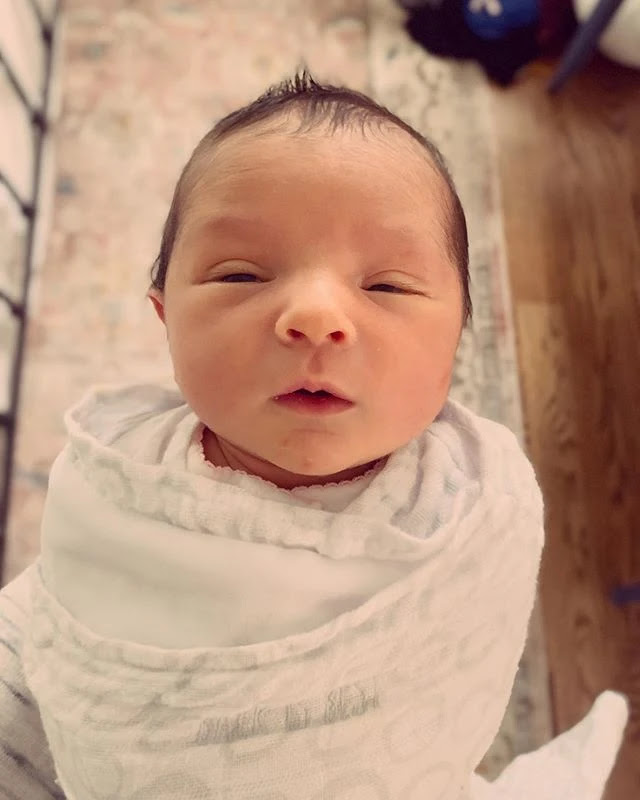“Let her sleep, for when she wakes, she will move mountains.”
This article is by: @thegansettgal
In the early weeks after delivering my daughter I found myself searching the internet for THE secret to sleep. Waking up every one to three hours had to be a joke… right?!
A couple weeks ago I asked on Instagram what people wanted to hear more about and of course most people said.. sleep! Here I am with some power for my people!! I have featured a lot of these however here are my secret sleep tips with a few bonus tips to help you and your newborn catch a few extra Zzz’s!
1.) A “dreamfeed” is quite possibly the best thing to ever happen on planet earth. I started dream feeding my daughter Grace around the 8-week mark when I was desperate for sleep.
A dream feed is when you slip in a little extra feed for your sleepy babe before you go to sleep (unless you’re crashing as soon as your baby goes down!)
I have always enjoyed the couple hours between Grace going to sleep and me finally calling it quits. After of course I have put on Netflix, ignored it, scrolled through Instagram, added things to my Nordstrom cart that I’ll probably never buy, and pinned projects on Pinterest that maybe I’ll eventually get to.. anyone else do this!?
Babies who go to sleep between 6-8pm often wake up in the middle of the night with a rumbling tummy. Research shows slipping in an extra feed at 10-11pm will help baby stay asleep a bit longer!
How To:
- Gently take your baby out of crib/bassinet
- Place breast or bottle to baby’s lower lip – baby should start to feed even if they aren’t fully awake
- Feed baby 5-10 minutes on each side
- Place baby gently back in crib/bassinet
I’m no Oprah but here a few of my favorite (dream feed) things:
Breastfriend (Twin) Nursing Pillow
Organic Burt’s Bees Baby Burp Cloths
Pottery Barn Kids Nursery Chair

2.) Swaddling is something I’ve been mastering for years at work, but never did I realize how important it was until my girl came earthside. Baby burritos have become my specialty!
At birth babies are born with many innate reflexes- one of them being the startle reflex. This perception makes them feel like they are falling, which causes them to experience jerking motions that ultimately wake them up!
Babies are used to being warm, cozy, and secure – as they were for 9 months in mamas belly! Swaddling recreates the feeling of being in the womb and in turn helps baby fall asleep and stay asleep!
Practice here! Ask your labor, delivery, or postpartum nurse for a hands-on tutorial after delivery. There are also several swaddle wrap brands out there that make it easy to keep these little Houdini’s under wraps!
NOTE: You must stop swaddling your baby with arms in once he/she starts to roll!
Here are a few of my favorite things:
- Newborn days: I love the SwaddleMe and Happiest Baby Sleepea Swaddle
These swaddles are nice because you’re able to get them nice and snug!
- Transitional swaddles: Halo Sleepsack and Merlin’s Magic Sleepsuit
These swaddles are easy to use when baby starts to roll and traditional swaddling stops
- Sleep Sacks: Can’t get enough of the Aden and Anias and Little Unicorn sleep sacks

3.) The Eat-Wake-Sleep Cycle was another 4 a.m. internet miracle. This is simple enough to try – when your child wakes up from either a nap or nighttime sleep – feed them immediately!
Having baby eat when he/she is 100% energized helps them to have a successful feeding and fill their tanks- so they don’t wake, play, fall asleep while eating and wake up hungry. Newborns are sometimes challenging to keep awake – but just do your best and perhaps feed them in just their diaper if you have a sleepier baby on your hands. After the feeding – keep the baby awake by partaking in age appropriate activities, until it is time to sleep again. This could be anywhere from 30 minutes to 2 hours depending on baby’s age (to be continued.) This helps them learn to fall asleep in a way that does not involve feeding- which is huge when sleep training. However, always feed your baby if they appear hungry! If following this system then you typically do not feed the baby again until the start of the next cycle.

4.) Learning about age appropriate wake times and sleep cues helped me understand what to expect and master when to put my baby down so she wasn’t under or over tired! Every baby is different but I found my daughter would become less vocal, disengaged, and slightly fussy when she was tired, and catching her before a meltdown was huge!
Other sleep cues are as follows: yawning, rubbing eyes or ears, staring, stillness, thumb/finger sucking, red eyes, or grunting.
Age appropriate wake times: meaning time spending awake between naps
Birth – 6 weeks: 30-60 minutes
2-3 months: 45 minutes to 2 hours
4-6 months: 1.5-2.5 hours
6-10 months: 2-3 hours
10-12 months: 2.5-3.5+ hours

5.) Creating a prime-time sleep environment helped us from birth onward. This means transforming the sleep space into a baby den.
In the first weeks following birth- babies are confused between daytime and nighttime! I’m sure some of you can remember those strong kicks during your pregnancy between 11pm and 3 am – welp things are about the same now that baby is earthside.
Early on we started having our daughter sleep with blinds open or in a well-lit area during the day and created a quiet, dark, white noise-filled room at night. This helped so much in helping her understand the difference between day and night.
During the day I would place the snuggleme organic lounger in the room we were in and would go about our daily activities so that my girl didn’t feel the need to have her longest sleep stretch mid-day (thanks, but no thanks!) In those early newborn days, when wake time was during feeds only, sometimes her daytime naps would happen in the baby rocker when I was awake and supervising her. During daytime feeds and diaper changes I would make eye contact, sing, smile, and have a grand ol’ time with my girl.
At night however, we had a very different routine – diaper changes and feeds were quick and quiet with minimal eye contact. This helped her understand that daytime is for having fun and nighttime is for sleep. For the first few months, she slept at our bedside in the Uppababy bassinet (attached to stand.) We then transitioned her slowly to her crib, starting with daytime naps -increasing time spent in her crib over the span of a couple of weeks before completely transitioning. Creating a dark room was done by choosing blinds and curtains that were light blocking. We love our Hatch sound machine which also acts as a night light to help with those middle-of-the-night feeds and diaper changes. Keeping the thermostat at the recommended temperature of 68-72 degrees ensured that she would not overheat or be too cold.
Sleeping is a learned behavior. As a young adult I actually had to make adjustments to my sleep routine and environment to help ensure a better nights sleep. Be patient, be calm, and be informed – you and your baby are navigating uncharted waters together. Remember – this too shall pass!
Following up to date Safe Sleep guidelines was extremely important to us, and I recommend always keeping track of safe sleep recommendations per American Academy of Pediatrics.
May this guide you to a longer nights rest
Would love to hear from you – what sleep tricks have helped you and your littles?
XOXO, GANSETTGAL
For more tips follow @gansettgal
Photo source: unknown






Leave a Reply